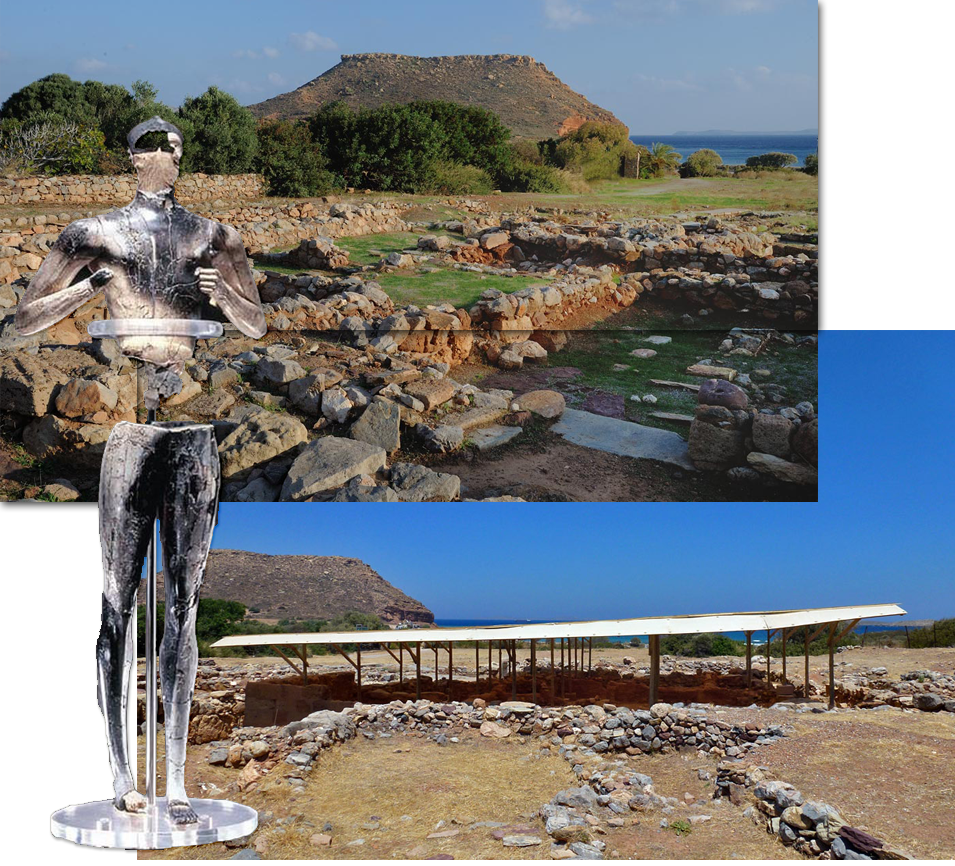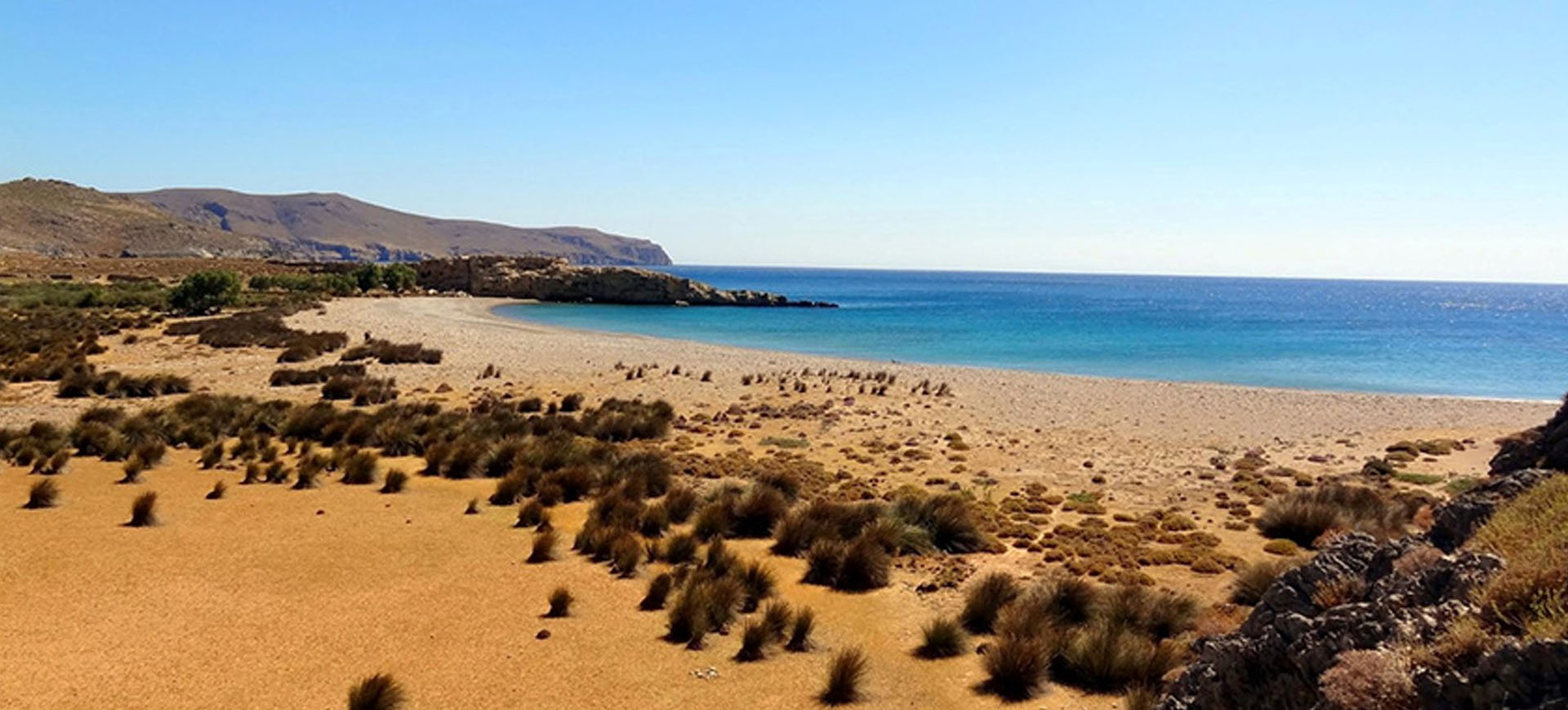
Welcome to Palaikasto
Discover our beautiful beaches and the spectacular views
Palaikastro is situated at the most eastern part of Crete, about 15km away from Sitia and 7km away from the famous palmforest Vai. It is the biggest village of all the area of Sitia, with about 1300 permanent residents.
It is conveniently located and gives access to the natural, historical and archaeological interest of the area. The semi-tropical climate offers mild, sunny winters and exotic warm summers which are never too hot because they are moderated by a cooling summer breeze called Meltemi.
A unique climatic condition, that powered the traders in ancient times.
There are many kilometers of beautiful seashores to discover with the famous blue water only the Mediteranian can provide. All of which compose an unparalleled peaceful landscape. This is an ideal place for quiet and unforgettable holidays.Palaikastro area is part of the geopark Sitia.
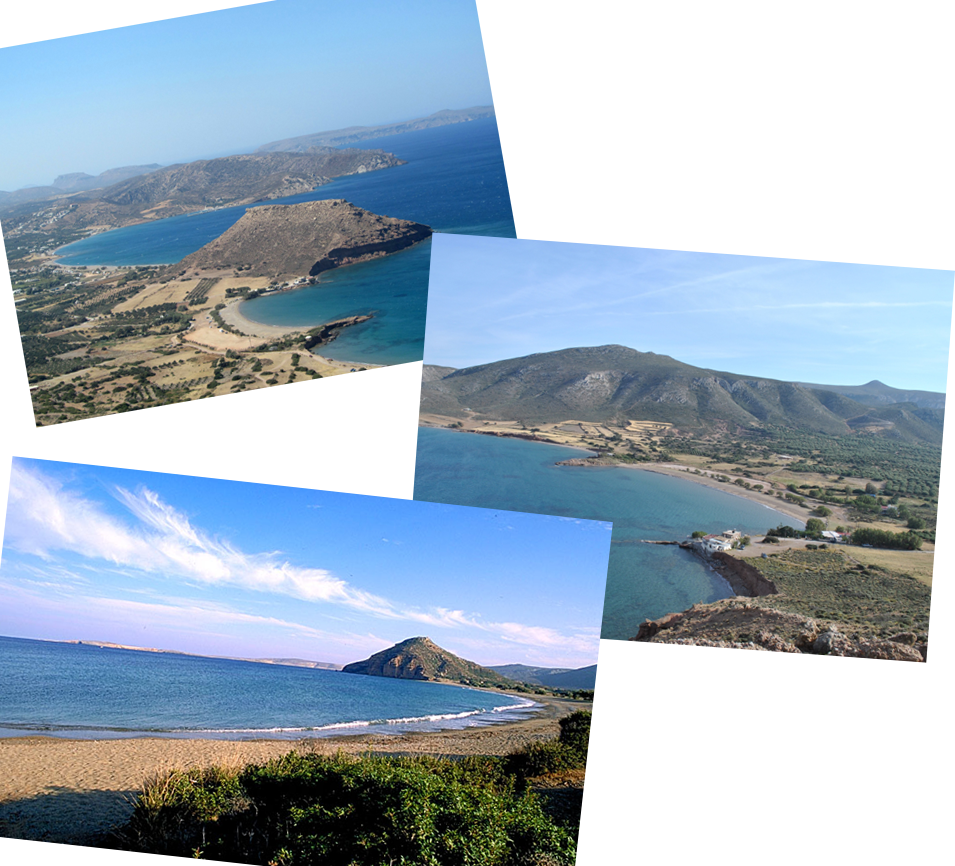
Beautiful beaches
Hiona Cottage is located close to them
Hiona
An ideal beach for the whole family. It is located only 1,5 km from Palaikastro, at close proximity to the small village of Agathias.
Itanos
It consits if three small picturesque beaches. The ruins of the ancient city of Itanos can be found here, part of which is sunk in the sea.
Kouremenos
A long sandy beach near Palaikastro (1,5 km). The sea is ideal for windsurfing and one of the best in Europe.
Vai Beach
The palm beach of Vai is one of the largest attractions of the Mediterranean island of Crete. It features the largest natural palm forest in Europe, made up of Cretan Date Palm (Phoenix theophrasti).
Maridati
A small scenic beach with a restaurant. Here you may relax and admire the sea view.
Karoumes
Reaching the village of Chochlakies, walk on the indicated path that leads to the entrance on the gorge and the beach.
Xerokampos
"Katsounaki" is a sandy beach near the many beautiful beaches of Xerokampos which is 9 km from Zakros and situated in the municipality of Sitia.
Zakros
The beautiful beach of Zakros is formed within a large protected bay. It is mainly pebbly with some rocks in places and has wonderfully tranquil waters.
Wind-surfing
in Palaikastro June, July and August
Palaikastro in the last few years has become the center for Wind surfing at the beach of Kouremenos. With the Meltemies often blowing, the naturally clean beach and surrounding waters make the Beach of Palaikastro one of the most popular beach in Greece.
Add a touch of adventure to your Greek holidays by trying out wind surfing at beautiful Kouremenos beach. Locals and tourists alike can be seen enjoying windsurfing off the clear waters of Kouremenos beach with tourist arrivals peaking during the months of August and July when the Meltemi winds blow quite strongly, perfect conditions to enjoy windsurfing in Palaikastro.
If you love the thrill of adventure and you΄d like to make your stay in Greece memorable then you should definitely try windsurfing here.
Palaikastro is one of the few places in Greece for the passionate lovers of wind surfing to enjoy the Meltemi especially through the months of July and August that the wind blows strongly in the area.
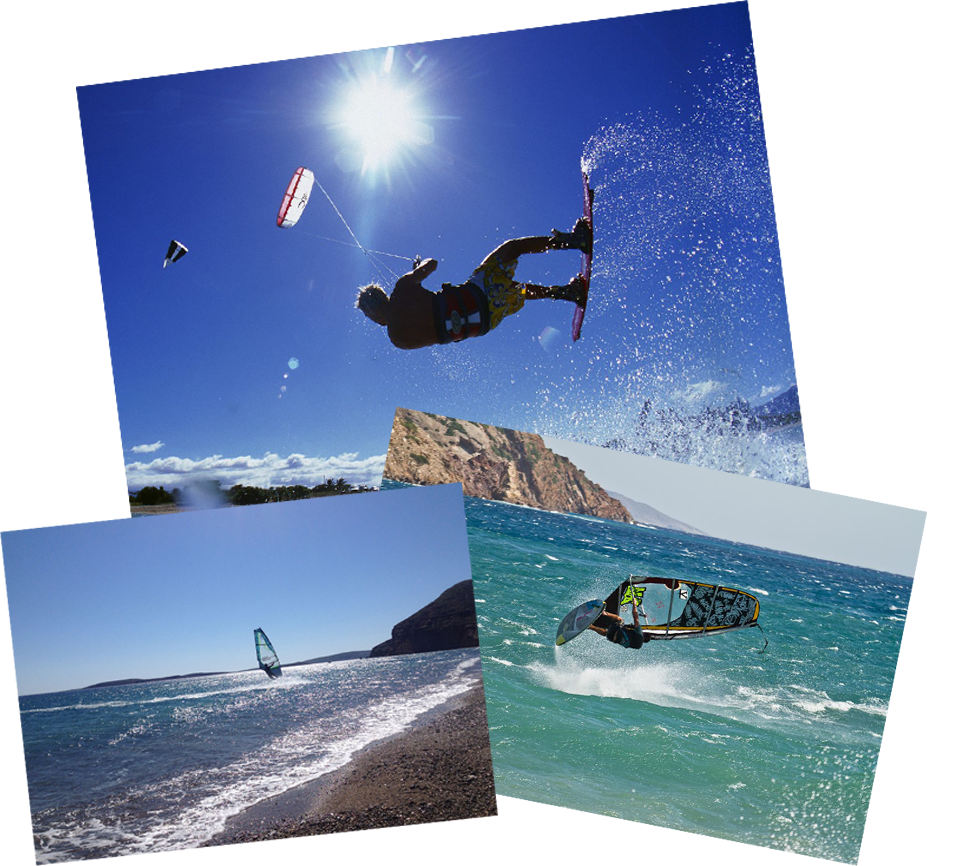
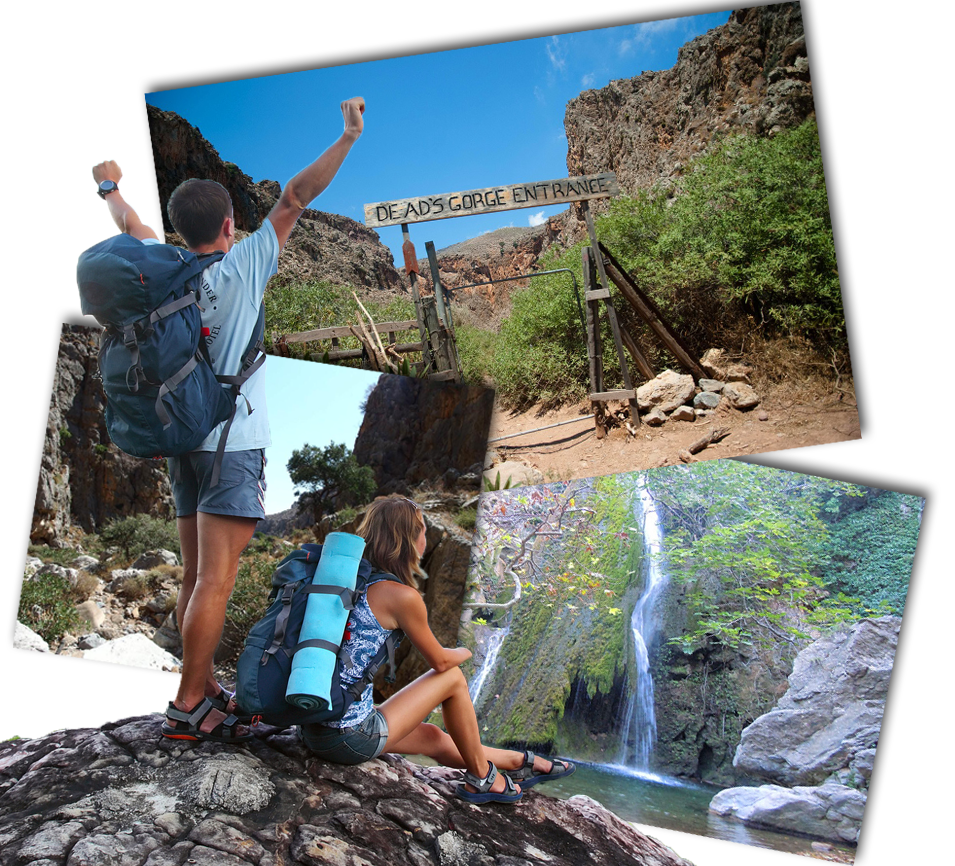
Hiking – Gorges
in Palaikastro all year long
Crete, on the whole, is a mountainous island. Its mountain ranges are torn apart by magnificent, deep, wild gorges, which begin at high altitudes and usually end up at the coast. Given the fact that these gorges were formed by the united forces of water, windand sun, they are rightfully considered true monuments of nature
Numerous rare endemic species of flora grow there, and a large number of raptors nest in the cracks on its walls: Griffon Vultures (Gyps fulvus), Golden Eagles (Aquilachrysaetos), Bearded Vultures (Gypaetus barbatus), etc. The famous Cretan wild goat (Capra aegagrus cretica)
Zakros gorge (Valley of the dead)
This is the most famous and probably the most frequently visited gorge in Eastern Crete. It was named “Valley of the dead”, because of the Minoan cave burials which were found in the gorge
Hohlakies gorge
This is a small gorge which is fairly easy to pass through under any conditions, regardless of the time of the year. It begins at the village of Hohlakies and ends up at the beautiful bay of Karoumes.
Rikhtis gorge
This is one of the most beautiful small gorges of Eastern Crete and it has a marked route. It follows the stream which flows all year round, creating a splendid waterfall.
Peak Sanctuary Petsofas
The Petsofas is top near Palekastro. Minoan times here created peak sanctuary and ceremonies included deposition of clay figurines of cattle, men and women.
Minoan Palaikastro
Discover the Ancient Site
The Palaikastro plain was occupied throughout the Bronze Age. The earliest confirmed habitation, about 2900 B.C. (EM I), was probably on a small scale. So far only one building up on Kastri and two others in the main settlement area have been excavated.
Gradually the population expanded and by about 1900 B.C. (the time of the first palaces at Knossos and Phaistos), a large, well-planned town had been established, with overseas contacts, including Egypt and Asia Minor. Around 1760 B.C. an earthquake caused much damage.
The following phase (MM III) saw reconstruction and a long period of growth, until (perhaps in 1628 B.C.) another earthquake and flooding again caused much damage. An extensive rebuilding programme followed and the ensuing phase (LM IA) was a time of prosperity
Fine houses with spacious rooms were built by rich traders, who filled their storage rooms with finely decorated pottery and stone vases, and kept track of their transactions on tablets written in Linear A.
At the end of this LM IA phase the town suffered the devastating effects of the Theran eruption that caused earthquakes and rained down ash. Once again the town was rebuilt, but the ensuing years were troublesome, with a sequence of fires, most likely due to human aggression, in the early 15th century (late LM IB), when there were widespread destructions across Crete.
Palaikastro also suffered, but here, unlike other towns, the population recovered. Repairs and reconstruction were undertaken during the following century (LM II - LM IIIA) and although there is evidence for a fire around 1370 B.C., contemporary with the final destruction of the palace at Knossos, life continued and prosperity returned.
Finally, around 1300 B.C. (LM IIIB) another earthquake struck, after which the town seems to have been slowly abandoned. People moved and settled for a time (LM IIIC) up on Kastri, but by the end of the 12th century B.C. they had left the coastal plain for the safety of the surrounding mountains.
